The Black Indians of New Orleans exhibition has just opened at the Quai Branly-Jacques Chirac Museum. Little known in France, the African-American custom of Mardi Gras Carnival in New Orleans is an exciting mix of traditions, beliefs and communities. A festivity rich in syncretism that is an opportunity to trace the history of African-Americans on the other side of the Atlantic, and to commemorate their experiences, between violence and resilience. To be discovered until 15, 2023.
Article produced in partnership with the Quai Branly-Jacques Chirac museum
Summary
The carnival
The Mardi Gras carnival is a flamboyant Métis identity tradition born of resistance to segregationist prohibitions. It is a highly spiritual custom and intimately linked to the past. Devotions are made to the ancestors, the life of the communities are celebrated and represented, as if in commemoration of history.
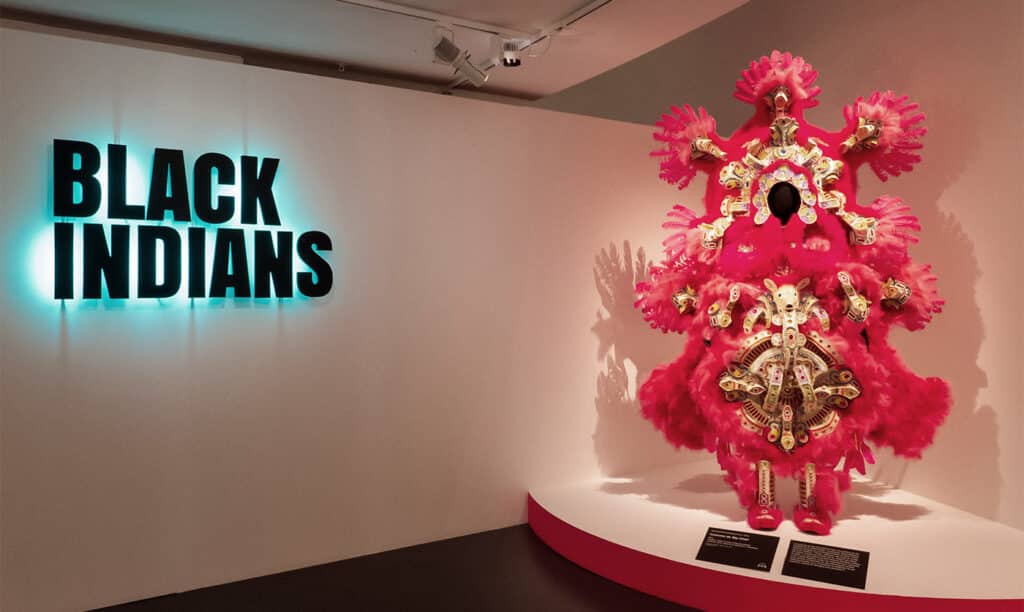
It was born around the 19th century, in a very divided political context since the city of New Orleans was extremely segregated. While the white community celebrated the Christian festival, the colored inhabitants of the city created in response their own carnival, provocative, liberating and political. Today, the parade gathers between 400 and 500 people divided into about 30 to 40 groups that march from dawn to midnight. Each group corresponds to a membership and an identity claim, and its different members have very precise functions.
Who are the Black Indians?
The Black Indians are one of the organized groups of the New Orleans carnival whose costumes are inspired by Native American ceremonial dress. Other groups coexist within these “tribes” such as the “Second Line”, the “Baby Dolls” or the “Skull and Bone Gangs”.
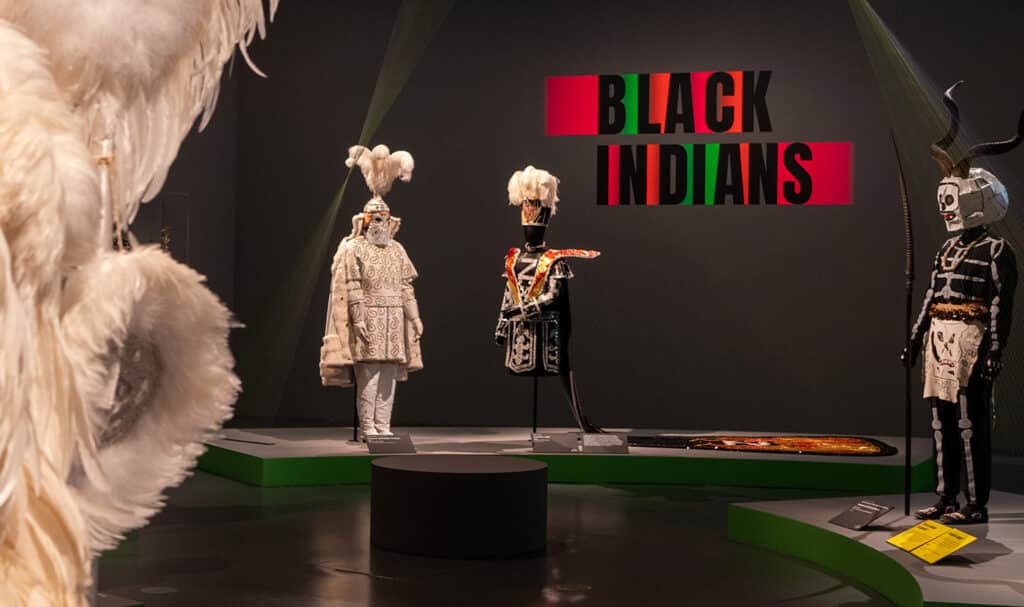
A custom linked to history
It is impossible to understand this tradition without knowing the past of the United States and the African-American populations on the continent. The exhibition traces the course of history from the arrival of the first settlers in the Mississippi Bay to the most recent events such as the Black Lives Matter movement.
Prior to European settlement, the Native American peoples of Mississippi lived in settled towns and cultural centers in the valley. The first settlers arrived in the early 17th century and were Spanish. Then the French invaded and founded New Orleans in 1718. The exhibition tells the story of Hernando de Soto’s expedition, which will forever change the landscape of Amerindian societies on the continent. Indeed, during this failed conquest, the colonist will lose hundreds of horses on the territory. Recovered by the inhabitants, they will mark forever the popular image of the Amerindians.
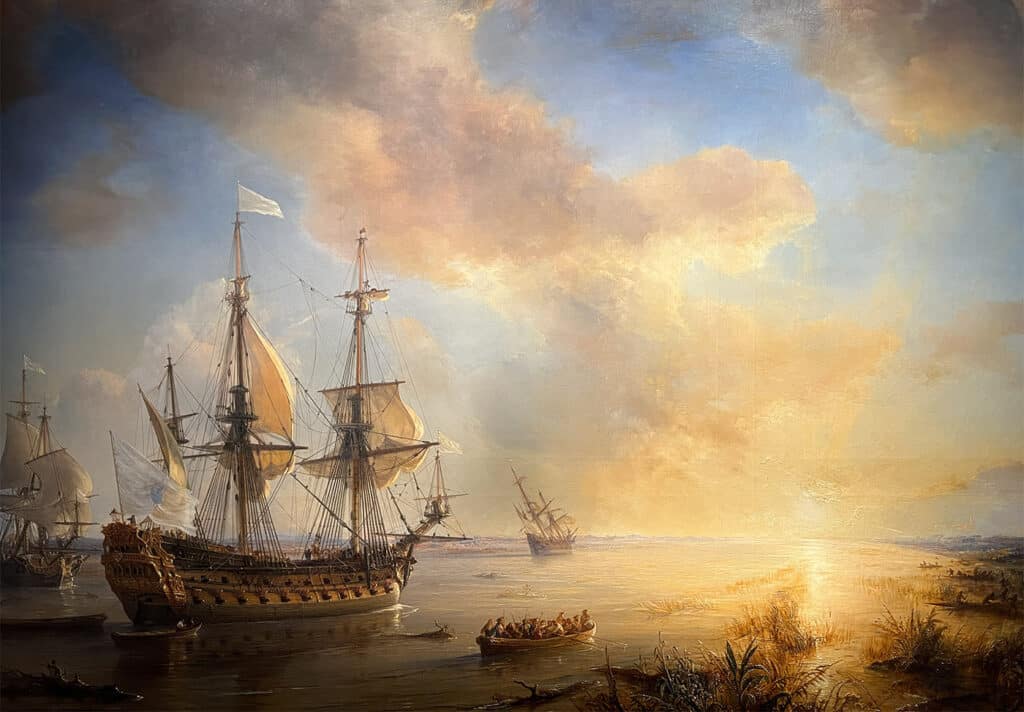
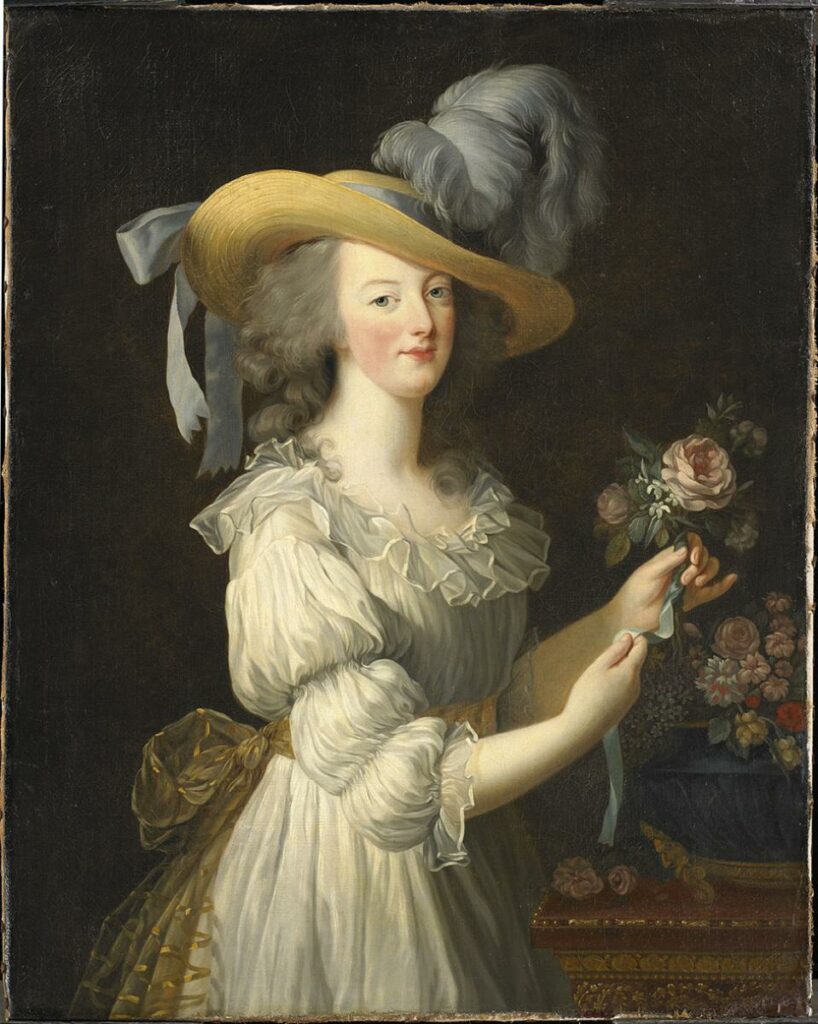
Fashion victim before the time
The French colonies in Louisiana and Santo Domingo were cotton producers. In a famous portrait, Le Brun painted Marie-Antoinette wearing a simple muslin dress. Judged too suggestive, the dress caused a scandal and the painting was removed after a few days. But it was already too late! The fashion for cotton was launched, and soon all the women of the Court would wear muslin clothes.
Slavery and segregation: the birth of resilience
In the 18th century, it is the establishment of slave societies and the slave trade. The Occidental Company of Nantes had a monopoly on the slave trade for nearly 30 years. Ships leaving the coasts of Africa crossed the Atlantic and brought thousands of Africans of various origins to the continent.
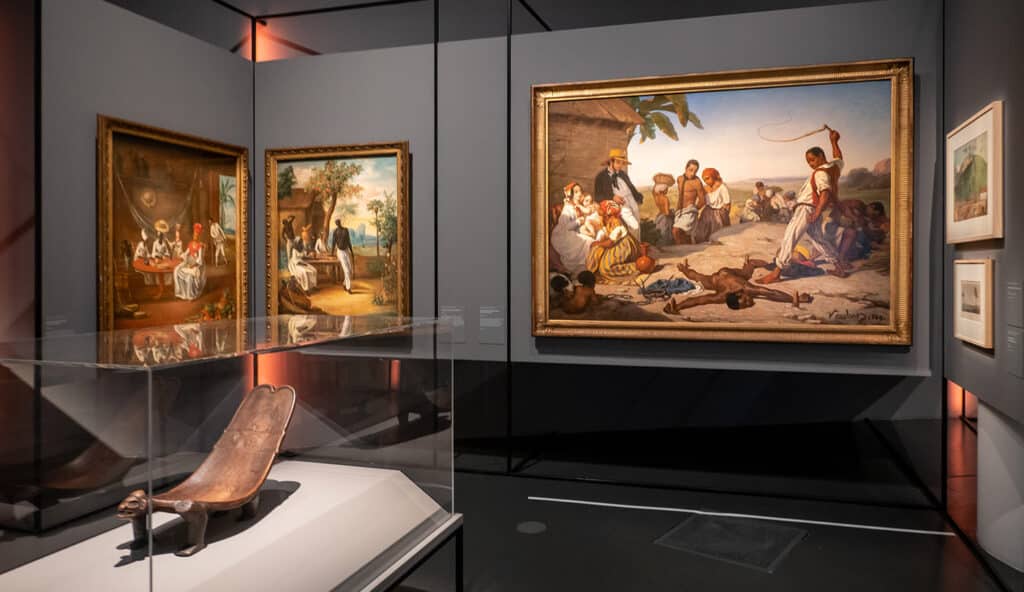
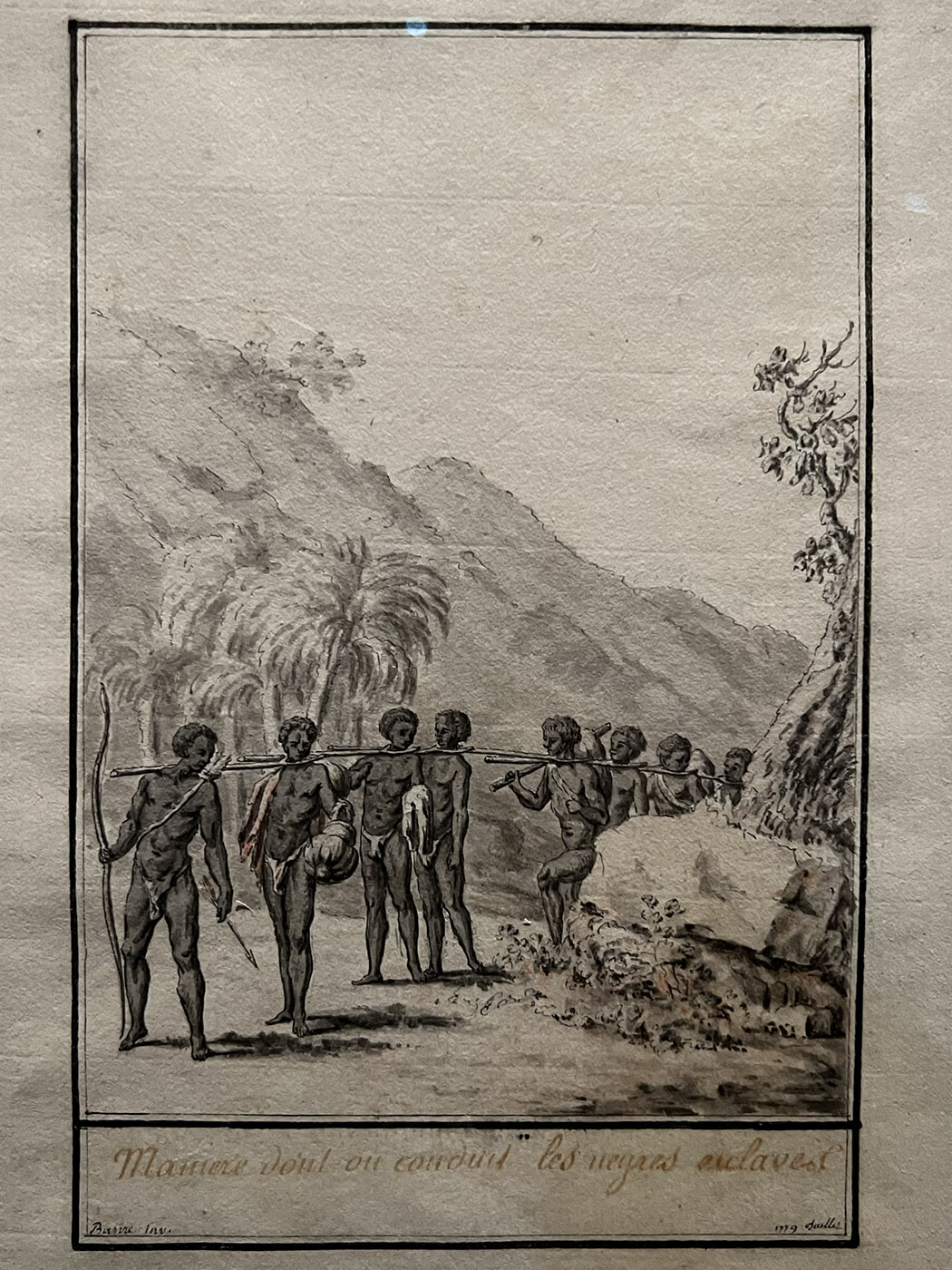
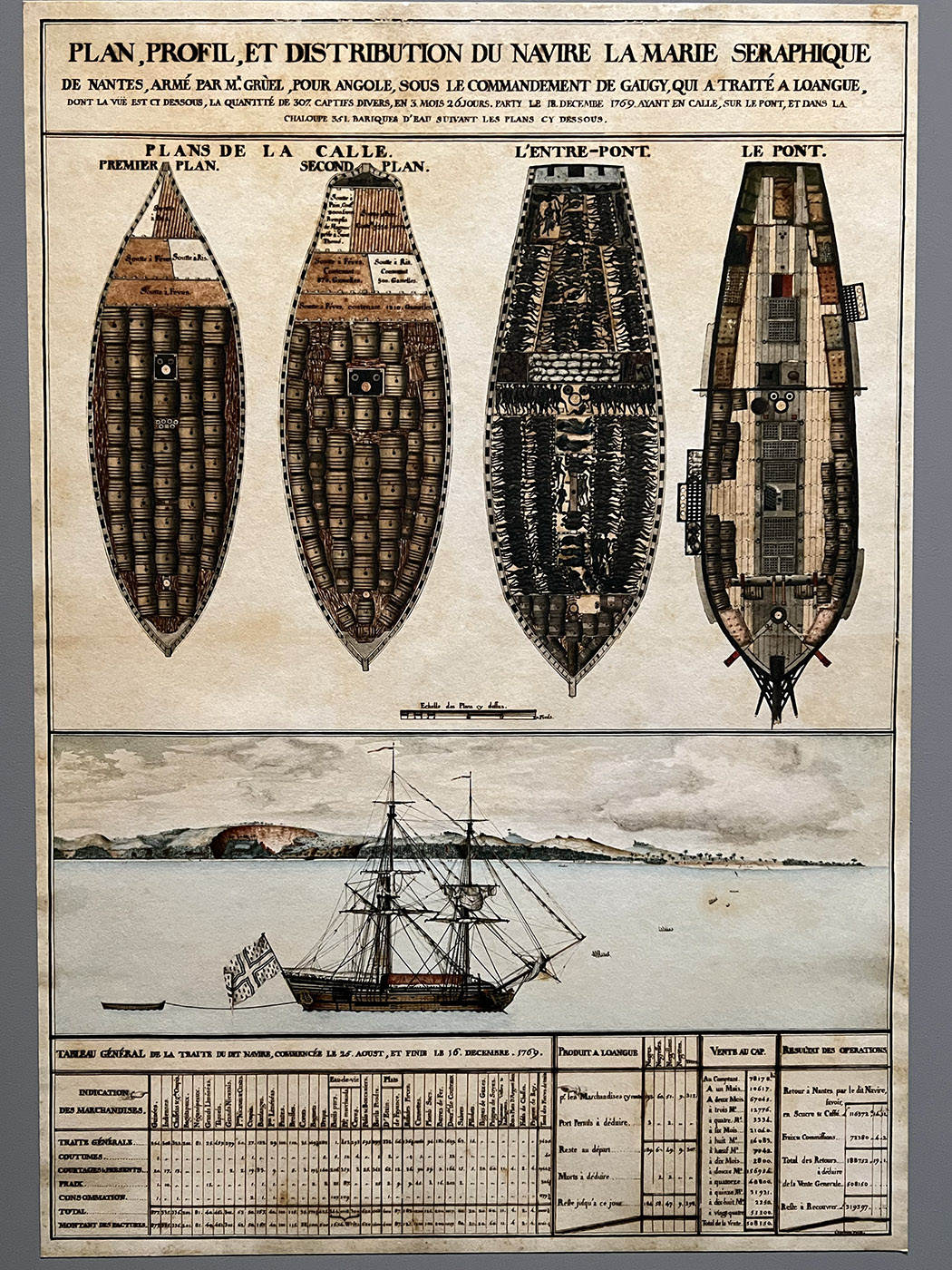

Once there, forced to practice the Catholic religion, these populations gathered on an esplanade at the gates of the city on Sundays to worship. This square will be renamed the “Congo Square” and will be the starting point of cultural mixtures and exchanges, and of a certain legend. There, the different oppressed communities, both indigenous and African, meet and begin to develop strategies of resilience. This is how a solidarity and a spiritual alliance in the construction of a culture of resilience between these two communities begins.
After the assassination of Abraham Lincoln, the South became segregated. Black communities were subjected to extremely violent humiliations, with the application of Jim Crow laws and the persecutions of the Ku Klux Klan.
Hurricane Katrina
Hurricane Katrina in 2005 will once again strongly mark the history of the Afro-descendant communities of New Orleans. This tragic event was a major turning point for the city, marking a new trauma in its history. However, with impressive resilience, the communities revived the carnival tradition the following year, demonstrating the strength of their cultural heritage. The American channel HBO will even make a series of it, which will confer a certain notoriety to the festival.

Art, spectacle and spirituality
More than a simple festivity, the African-American carnival in New Orleans is a powerful unifying tool, a source of pride and collective identity. By appropriating the street and public space, the communities affirm their presence and their belonging to the city.
Each group leader designs and makes his or her own garment, in consultation with the rest of the community. Each costume can only be worn once. The costumes are made by hand and with great care. During the marches, two chiefs confront each other during dances or simulated fights, and at the end, one of them recognizes the superiority of the other’s beauty, and bows.
Shining with a thousand lights, the outfits mix decorations, embroidered or painted figurative scenes, and symbols of belonging to various communities: feathers, West African masks, biblical scenes… Of Amerindian inspiration, they were originally made of bird feathers, fish scales, organic materials. Today, synthetic fabrics have replaced skins, and the costumes are decorated with cowries, sequins and multicolored fabrics and feathers. Also, the costumes must be as beautiful in the front as in the back. They are designed to be eye-catching. The backs are also full of details and scenes.

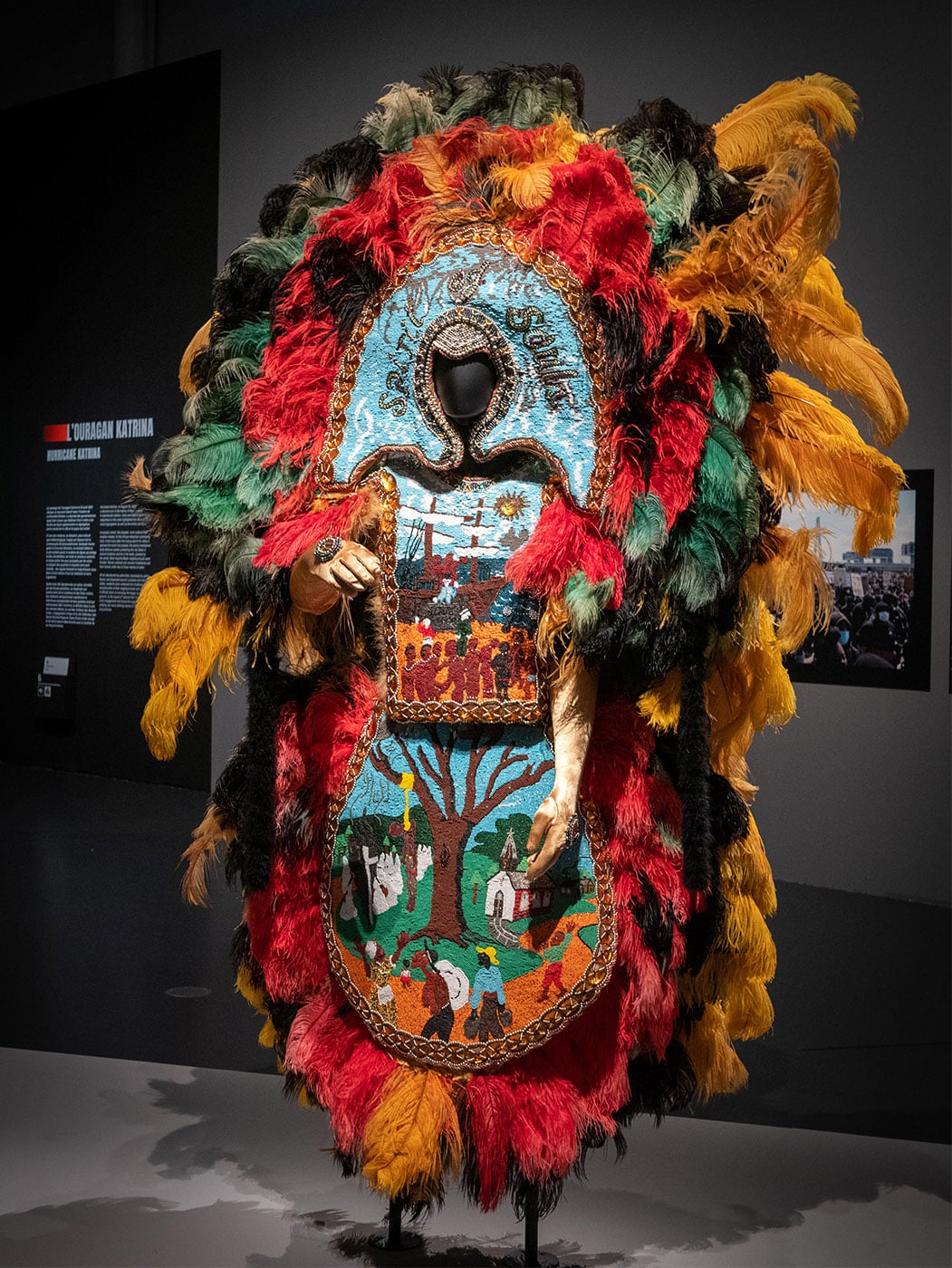
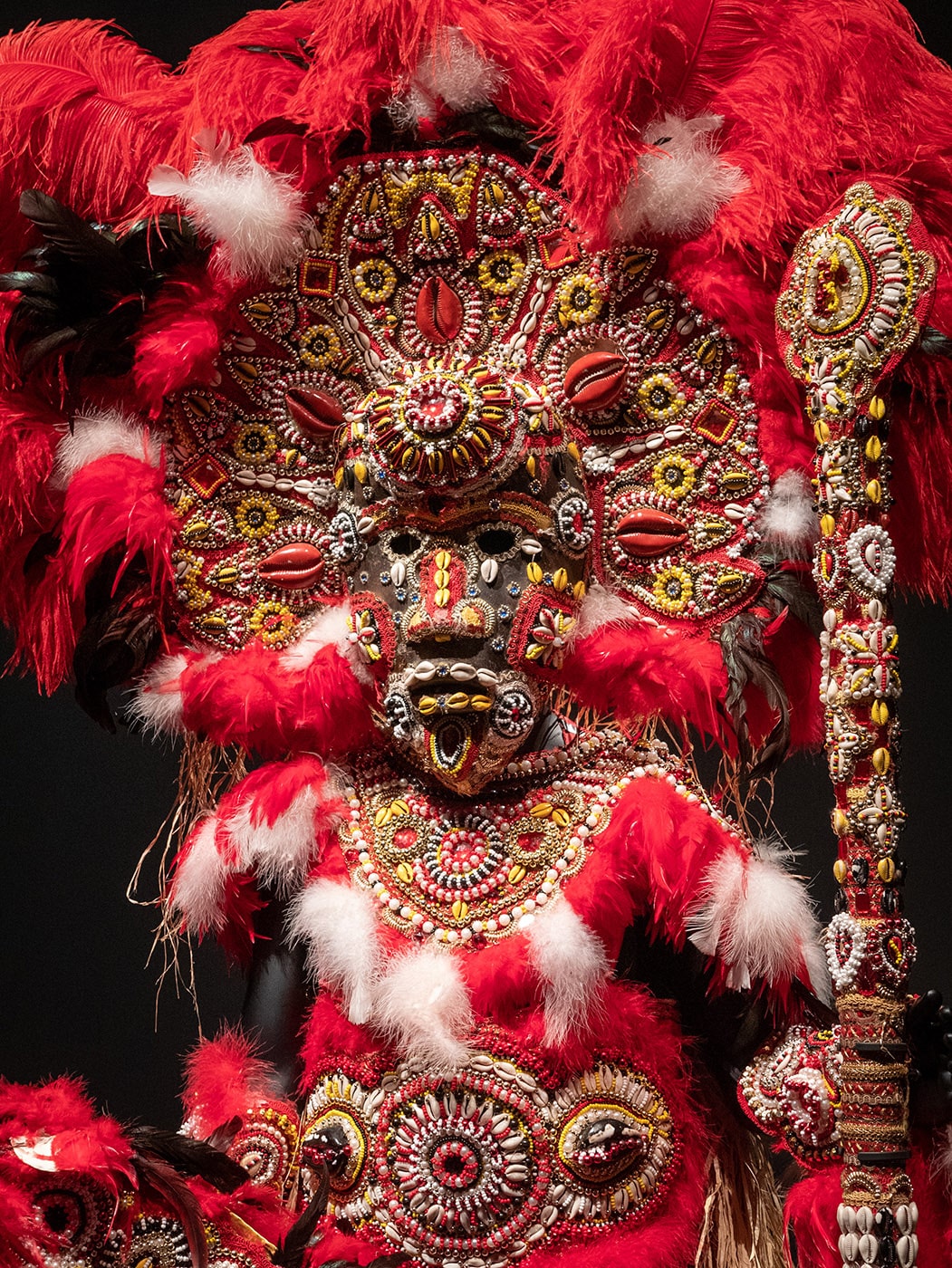
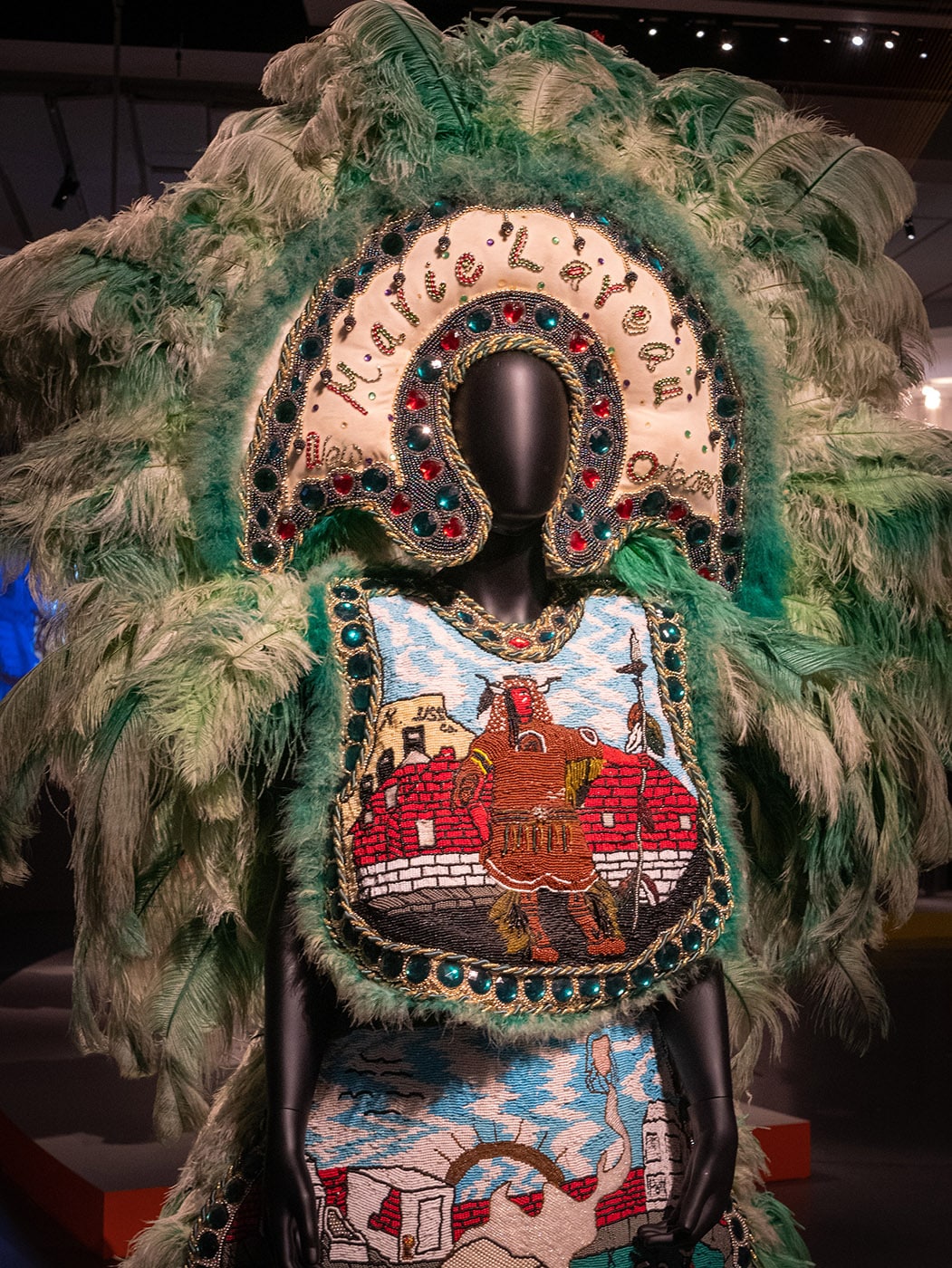
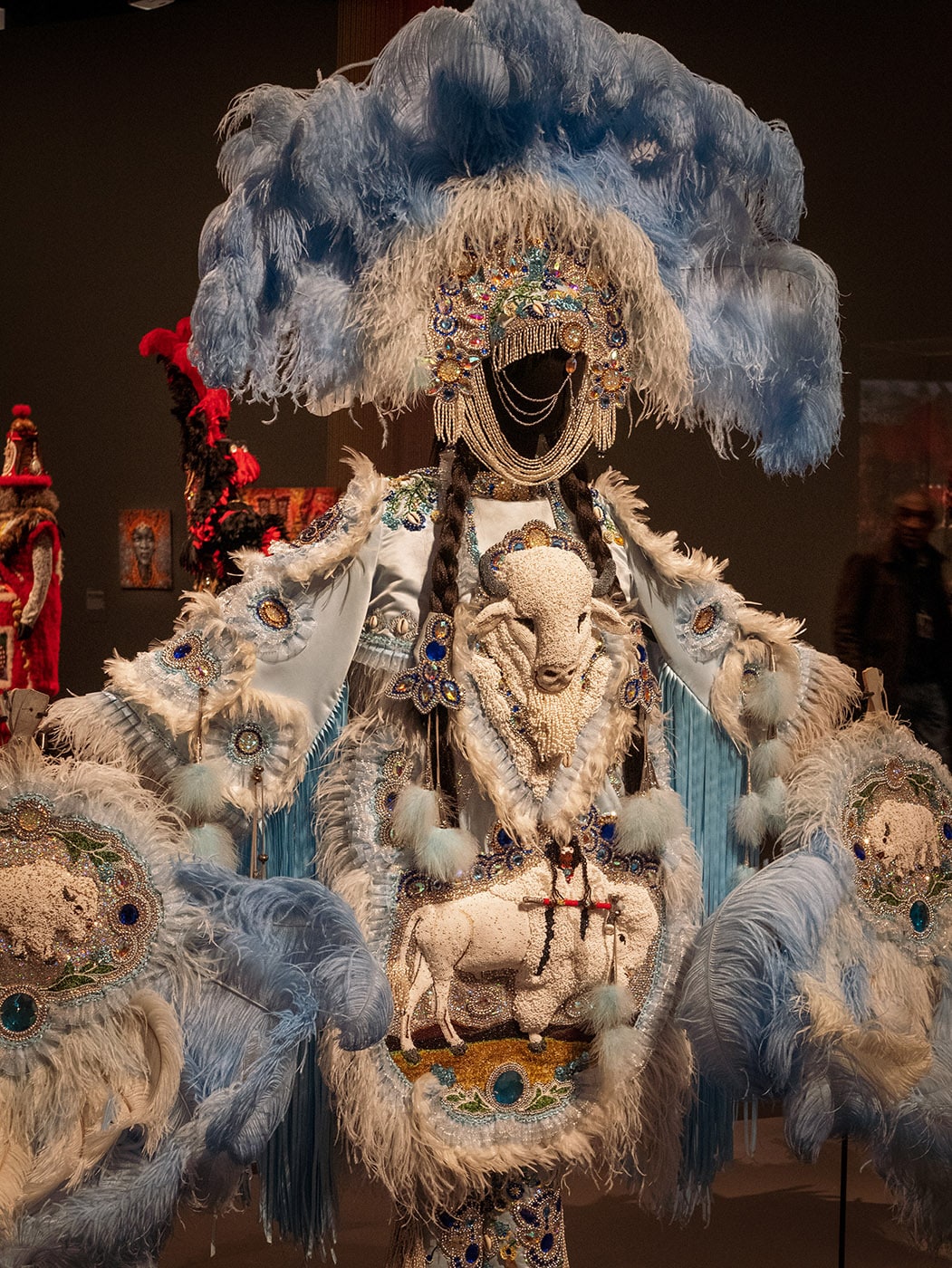

The scenes often represent moments in the history of people of color, scenes of persecution or conversely of bravery. They are testimonies of history and common memory.
The Baby dolls
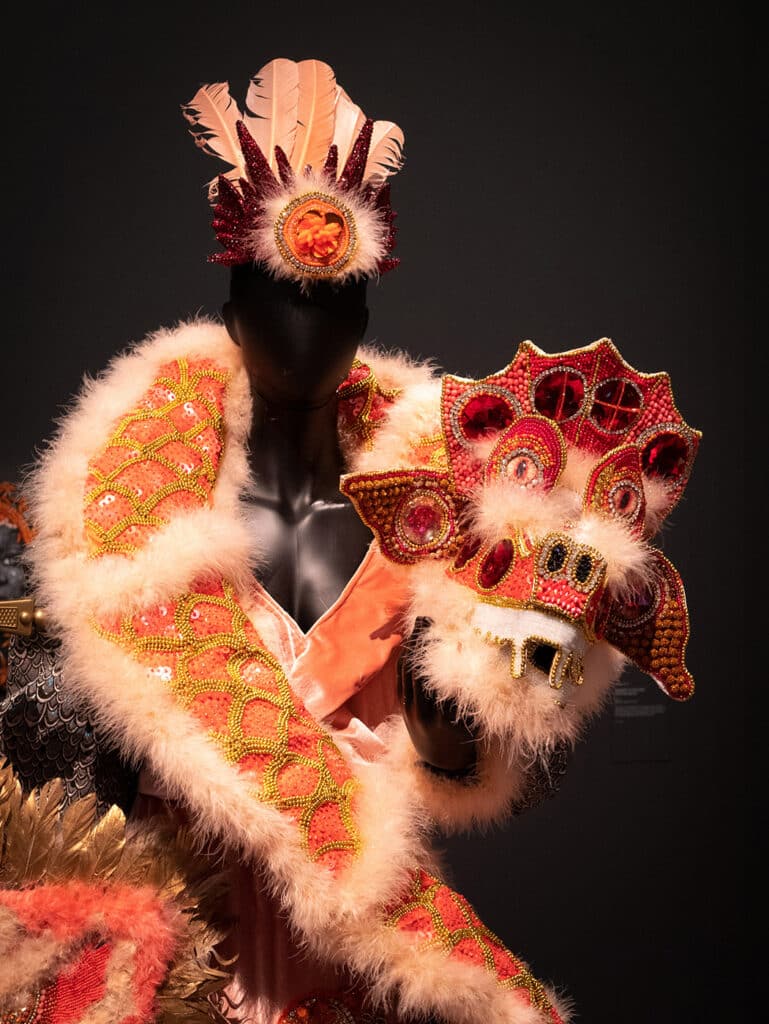
They are the only female group in the Mardi Gras community marches. For a long time, women, especially black women, were excluded from the processions, because it was not considered appropriate in society to expose their own identity. They have since taken their revenge, taking the opposite of these prohibitions by seizing the provocative codes of baby dolls, which were sex symbols at the time. One will notice in the exhibition the superb crochet outfit inspired by Josephine Baker!
The Black Indians, by the strength of their resilience, were able to install in the American landscape with the carnival, this piece of culture identity which is theirs.
Around the exhibition
A rich cultural program accompanies the exhibition: concerts, colloquium, musical animations, film series, guided tours…
Useful informations
Adress:
Quai Branly – Jacques Chirac museum
37 quai Branly
75007 Paris, France
Opening hours:
Until January 15, 2023
Every day except Monday, from 10:30 am to 7 pmNocturne on Thursday until 10 pm
Website:
www.quaibranly.fr
Prices:
Full price: 12 €.
Reduced rate : 9 € for children
Free for children under 26 years old
Article produced in collaboration with the Quai Branly – Jacques Chirac Museum

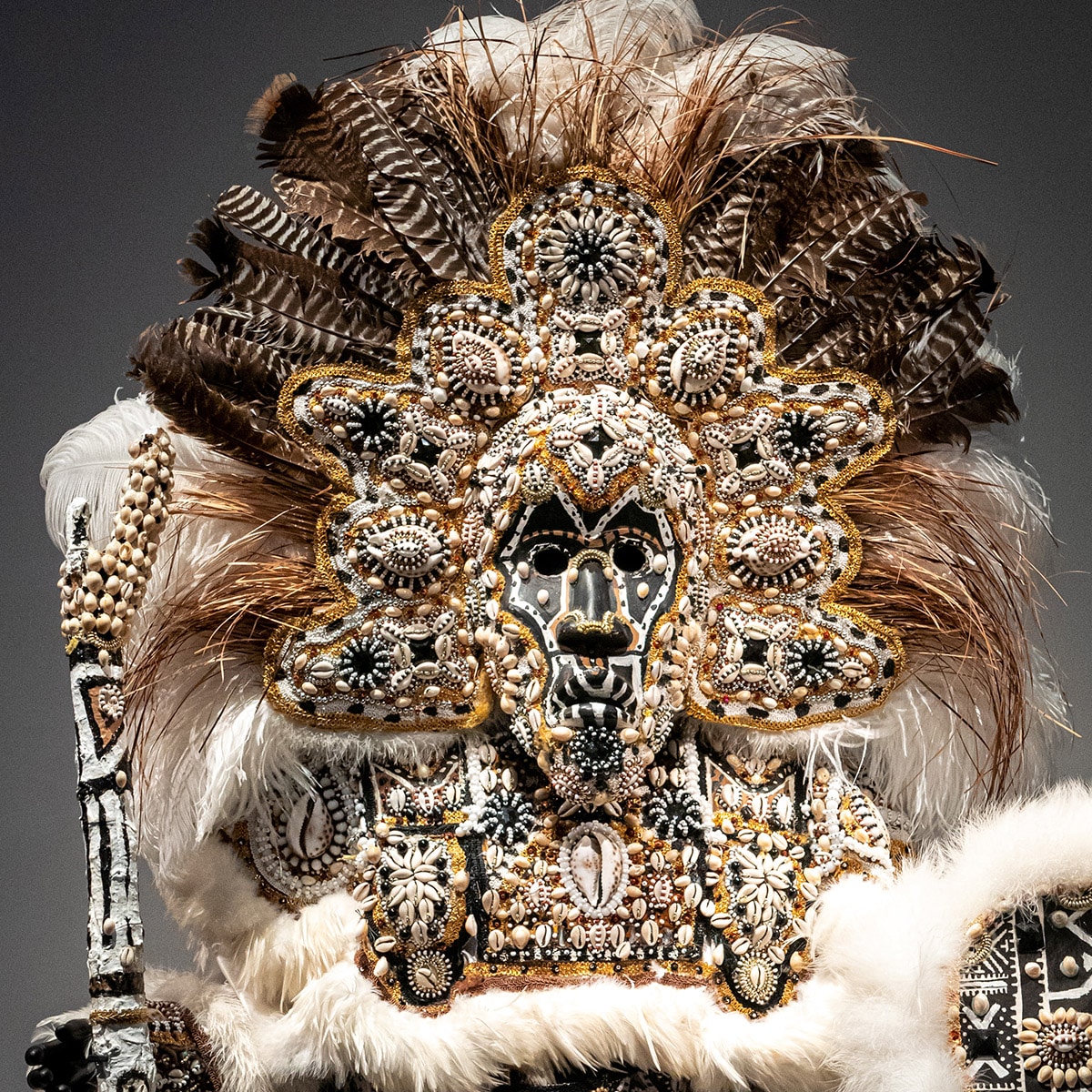



No Comments
Leave a comment Cancel